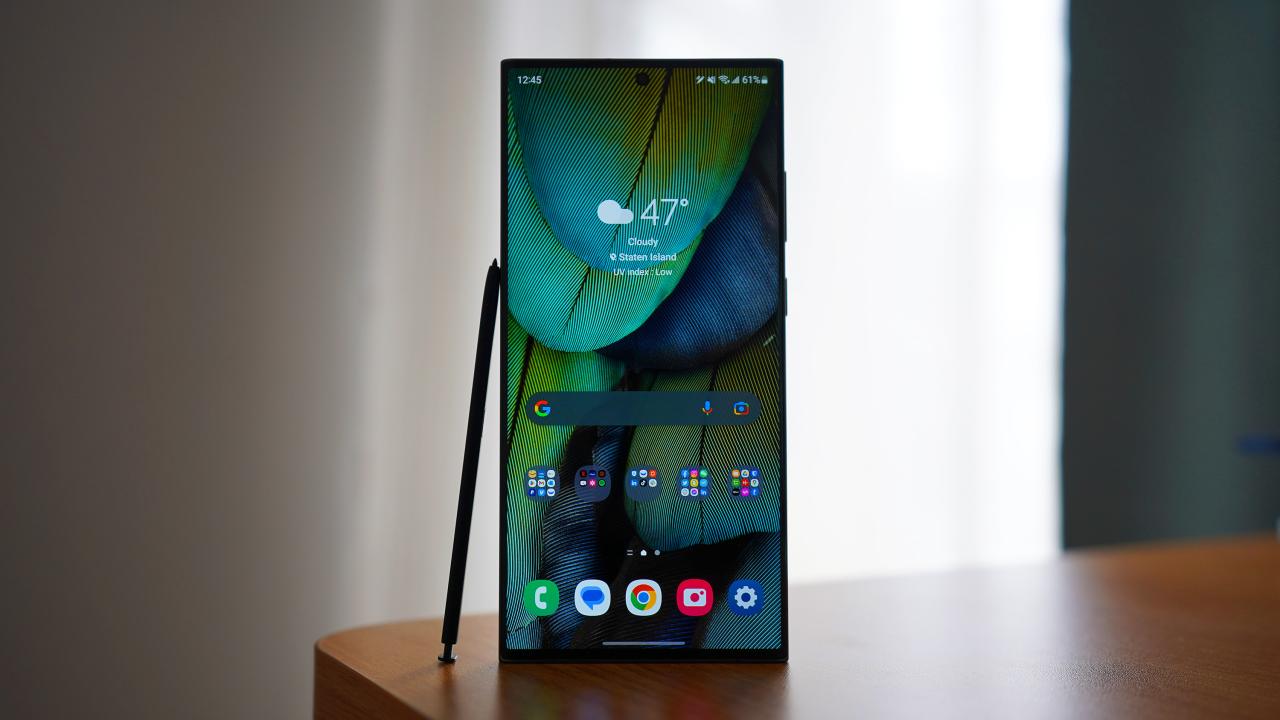samsung note7 brought excitement to tech enthusiasts with its cutting-edge features and sleek design, marking a significant milestone for Samsung in the smartphone industry. However, this flagship device became notorious for its battery issues, overshadowing its impressive specifications and high consumer expectations. The Note7’s journey from launch to recall serves as a cautionary tale in the realm of mobile technology.
Initially designed to cater to power users seeking advanced productivity tools, the Samsung Note7 boasted features like an S Pen, water resistance, and a stunning display. Yet, as history would unfold, the promise of innovation was marred by significant manufacturing flaws, leading to a series of recalls that affected consumer trust and Samsung’s reputation.
Overview of Samsung Note7

The Samsung Note7, released in August 2016, represented a significant leap in smartphone technology, combining cutting-edge features with a sleek design aimed at professionals and tech enthusiasts. The device was praised for its superior performance, enhanced capabilities, and premium build quality, making it a strong contender in the competitive smartphone market.
The Samsung Note7 was equipped with an array of impressive specifications that catered to modern mobile users. It featured a 5.7-inch QHD Super AMOLED display, delivering vibrant colors and sharp imagery, which was particularly appealing for media consumption. Powered by either the Qualcomm Snapdragon 820 or Samsung’s Exynos 8890 processor, the Note7 offered fluid performance with 4GB of RAM and options for either 64GB or 128GB of internal storage, expandable via microSD. The device also included a 12MP dual-pixel rear camera and a 5MP front-facing camera, ensuring high-quality photography. One notable aspect was its S Pen, which allowed for enhanced productivity with features like screen-off memo and translation capabilities. Additionally, the Note7 was IP68-rated for water and dust resistance, appealing to users who sought durability in their devices.
Timeline of Key Events
The journey of the Samsung Note7 began with a series of significant events that shaped its launch and subsequent challenges. Understanding this timeline provides context for the device’s impact on the smartphone industry.
- August 2, 2016: The Samsung Note7 was officially unveiled during a launch event in New York City, generating excitement with its innovative features.
- August 19, 2016: The device became available for pre-order, with many consumers eager to experience the latest technology.
- September 2016: Customers began receiving their devices, and reviews highlighted the Note7’s exceptional performance and features.
- September 2, 2016: Samsung announced a global recall of the Note7 due to reports of battery explosions, affecting millions of devices.
- October 2016: The company issued replacement devices, but further incidents led to a second recall.
- October 11, 2016: Samsung officially discontinued the Note7, marking a significant setback for the brand.
Target Market and Consumer Expectations
The Samsung Note7 was strategically targeted toward business professionals, tech enthusiasts, and consumers seeking a premium smartphone experience. The demand stemmed from the device’s reputation as a productivity powerhouse with the S Pen functionality, which was heavily marketed as a tool for creativity and efficiency.
Consumer expectations for the Note7 were high, as Samsung aimed to maintain its leadership position in the smartphone market. Users anticipated enhanced multitasking capabilities, seamless integration with other Samsung devices, and a robust ecosystem of apps and services. The expectation was for a smartphone that not only performed well but also provided a superior user experience, showcasing Samsung’s innovation and commitment to quality. The combination of powerful hardware, advanced features, and a premium design created a strong appeal for those willing to invest in a top-tier mobile device.
Battery Issues and Recalls: Samsung Note7
The Samsung Galaxy Note7 was initially celebrated for its innovative features and powerful performance. However, it was soon overshadowed by significant battery issues that raised serious concerns among consumers and tech enthusiasts alike. These defects not only led to product recalls but also impacted Samsung’s reputation as a leading smartphone manufacturer.
The battery malfunctions in the Note7 stemmed from manufacturing flaws that caused the lithium-ion batteries to overheat and, in some instances, catch fire. The issues were primarily attributed to two key factors: the design of the battery and the manufacturing process. In the first batch of Note7 devices, the batteries were found to have a manufacturing defect that allowed the positive and negative electrodes to come into contact, leading to short circuits. Following reports of incidents, Samsung undertook an intensive investigation that revealed the scale of the problem.
Response to Battery Issues and Recalls
In response to the alarming battery issues, Samsung implemented a multifaceted strategy aimed at addressing consumer safety and restoring trust in the brand. The company’s response included the following steps:
1. Product Recall: Samsung initiated a global recall of the Note7 shortly after the first reports of battery-related incidents. The company urged all customers to return their devices for a refund or exchange.
2. Battery Replacement Program: To regain customer confidence, Samsung launched a battery replacement program, offering customers a safe battery option for their existing Note7 devices. This program was designed to minimize inconvenience and ensure customer safety.
3. Investigation and Transparency: Samsung conducted a thorough investigation into the battery failures and committed to transparency throughout the process. The findings were eventually shared with the public, highlighting the flaws in both the design and manufacturing processes.
4. Enhanced Quality Control Measures: Following the recalls, Samsung overhauled its quality control processes, implementing a new 8-point battery safety check to prevent similar issues in future devices. This included rigorous testing of battery design, materials, and production processes.
5. Consumer Communication: Samsung maintained open lines of communication with its customers, providing timely updates and clear instructions on how to return devices. This proactive approach aimed to reassure consumers and enhance brand loyalty.
The fallout from the Note7 recalls had a profound impact on consumer trust and Samsung’s brand reputation. Although many customers appreciated the prompt action taken by Samsung, the incident resulted in a significant decline in sales and brand perception. Surveys conducted after the recall indicated a marked decrease in consumer confidence in Samsung’s products. The company’s efforts to rectify the situation and restore trust will take time, but the lessons learned from the Note7 debacle have prompted Samsung to prioritize safety and quality in its future releases.
The Note7 recalls serve as a cautionary tale for the tech industry, illustrating the importance of rigorous testing and quality assurance in product development.
Legal and Financial Implications

The Samsung Galaxy Note7 saga marked a significant chapter in corporate responsibility, consumer safety, and financial repercussions for one of the world’s largest technology companies. The incidents surrounding the device not only raised serious legal questions but also led to substantial financial consequences. This analysis delves into the lawsuits that emerged, the financial losses incurred by Samsung, and the subsequent changes in the company’s future product strategies.
Lawsuits and Legal Actions
The Note7 incidents triggered a wave of legal actions, primarily led by consumers and regulatory bodies. Key lawsuits included claims for damages due to property loss, personal injury, and the psychological impact of the device’s malfunctions. The legal landscape was marked by several pivotal cases:
- Class Action Lawsuits: Numerous class action suits were filed across the United States, seeking compensation for the inconvenience and risk caused by the device’s faulty batteries.
- Litigation Costs: Samsung faced significant legal expenses, estimated to be in the millions of dollars, as it navigated the complex legal challenges presented by these lawsuits.
- Regulatory Scrutiny: In addition to private lawsuits, Samsung was subjected to investigations by federal agencies, including the U.S. Consumer Product Safety Commission (CPSC), which resulted in additional financial liabilities.
The legal ramifications not only led to payouts but also contributed to reputational damage, which often translates to long-term financial impact.
Financial Losses Incurred by Samsung
The financial fallout from the Note7 controversies was staggering, impacting Samsung’s bottom line significantly. Analysts estimated that the total cost of the recalls and related expenses reached approximately $5.3 billion. Factors contributing to these losses included:
- Recall Costs: The company incurred direct costs from the recall process, including logistics, customer refunds, and replacement devices.
- Lost Sales: The discontinuation of the Note7 affected overall sales, particularly in the premium smartphone market where the device was expected to perform strongly.
- Brand Damage: The incident led to a decline in consumer trust, with some surveys indicating that many users considered switching brands due to safety concerns.
The combination of these factors not only hit Samsung’s financial statements hard in the short term but also resulted in a long-lasting impact on the company’s market share and brand image.
Influence on Future Product Strategies, Samsung note7
In the wake of the Note7 crisis, Samsung was compelled to reassess and refine its product development strategies. The company implemented several key measures to ensure safety and regain consumer trust:
- Enhanced Quality Control: Samsung established stricter quality assurance protocols, including multi-layer safety checks for battery production.
- New Testing Procedures: The introduction of an eight-point battery safety check was implemented to prevent future incidents.
- Focus on Communication: Samsung enhanced its communication strategy, providing transparent updates and guidance to consumers regarding product safety.
These strategic shifts were aimed at rebuilding its reputation and ensuring that future products would prioritize consumer safety alongside performance.
In the wake of the Note7 crisis, Samsung learned that innovation without safety can lead to catastrophic consequences.
Legacy and Lessons Learned

The Samsung Galaxy Note7’s short-lived existence had a profound impact on the company and the smartphone industry as a whole. This incident not only shaped Samsung’s brand image but also influenced the direction of technological advancements and safety protocols in mobile devices. As we reflect on the legacy of the Note7, it is essential to consider the strides made by Samsung in product development and the broader implications for the tech industry.
Advancements in Successor Devices
Following the Note7 debacle, Samsung took significant steps to enhance product safety and quality in its subsequent devices. The Galaxy Note8, released in 2017, showcased notable improvements, particularly in battery technology and safety measures. Samsung implemented an extensive 8-point battery safety check to ensure that all components met rigorous safety standards before being integrated into their devices.
These advancements included:
- Enhanced Battery Design: The Note8 featured a more robust battery design that minimized the risks associated with overheating.
- Thorough Testing Procedures: Samsung adopted more stringent testing protocols for its batteries, including a comprehensive assessment of battery cells, battery management systems, and device cooling mechanisms.
- Increased Transparency: The company made its testing processes more transparent, reassuring consumers about the safety of their products.
Each release after the Note7 has reflected a commitment to quality control and consumer safety that was significantly influenced by the lessons learned from the incident.
Lessons Learned in Product Safety and Quality Control
The Note7 incident served as a critical wake-up call for Samsung regarding the importance of maintaining rigorous quality control throughout the product lifecycle. The company recognized that rapid product development must not come at the expense of safety.
Key lessons learned include:
- Prioritizing Safety in Design: Future devices have been designed with an emphasis on safety features, ensuring that potential failures are addressed at the design stage.
- Investing in Research and Development: Samsung has increased its investment in R&D to innovate and improve battery technology, focusing on safer materials and designs.
- Implementing Cross-Functional Teams: The integration of diverse teams from engineering, manufacturing, and quality assurance has become standard practice to enhance communication and oversight.
These lessons have fortified Samsung’s approach to product development and have become a framework for other companies in the industry.
Impact on Industry Regulations and Standards
The fallout from the Note7 incident extended beyond Samsung, prompting a reevaluation of safety standards across the mobile device industry. Regulatory bodies and industry organizations recognized the need for more stringent guidelines to enhance consumer safety.
Notable changes include:
- New Battery Safety Standards: Organizations such as the Underwriters Laboratories (UL) and the International Electrotechnical Commission (IEC) have updated their safety standards to include more rigorous testing for lithium-ion batteries used in consumer electronics.
- Increased Government Oversight: Various governments have begun to impose stricter regulations regarding product recalls and reporting processes, ensuring that manufacturers notify consumers promptly in case of safety issues.
- Industry Collaboration: Companies within the tech sector have started collaborating to share insights on safety practices, leading to the establishment of a more comprehensive safety culture in the industry.
This reshaping of regulations demonstrates the lasting influence of the Note7 incident, ensuring that safety remains at the forefront of technological advancements in the mobile device sector.
FAQ Compilation
What were the key features of the samsung note7?
The samsung note7 featured a high-resolution display, S Pen functionality, water resistance, and premium build quality.
When was the samsung note7 launched?
The samsung note7 was launched on August 19, 2016.
What caused the battery issues in the samsung note7?
The battery issues were primarily due to manufacturing defects that led to overheating and in some cases, explosions.
How did Samsung respond to the recall?
Samsung initiated a full recall of the device, offering exchanges and refunds to affected customers while implementing new safety protocols.
What impact did the samsung note7 have on Samsung’s brand?
The samsung note7 controversy caused significant damage to Samsung’s brand reputation, leading to a loss of consumer trust that the company has been working to rebuild.
The s7 edge remains a popular choice among smartphone enthusiasts due to its sleek design and impressive performance. With features like a dual-edge display and powerful camera, it stands out in the crowded market. Moreover, the evolution of the samsung galaxy s series further highlights Samsung’s commitment to innovation, showcasing advancements that keep users engaged and satisfied with their devices.
The samsung galaxy s series has revolutionized the way we perceive smartphones, blending cutting-edge technology with user-friendly features. Models like the s7 edge exemplify this ethos, offering unparalleled performance and stunning visuals. As Samsung continues to push boundaries, the anticipation for each new release grows, making it a favorite among tech lovers around the world.
